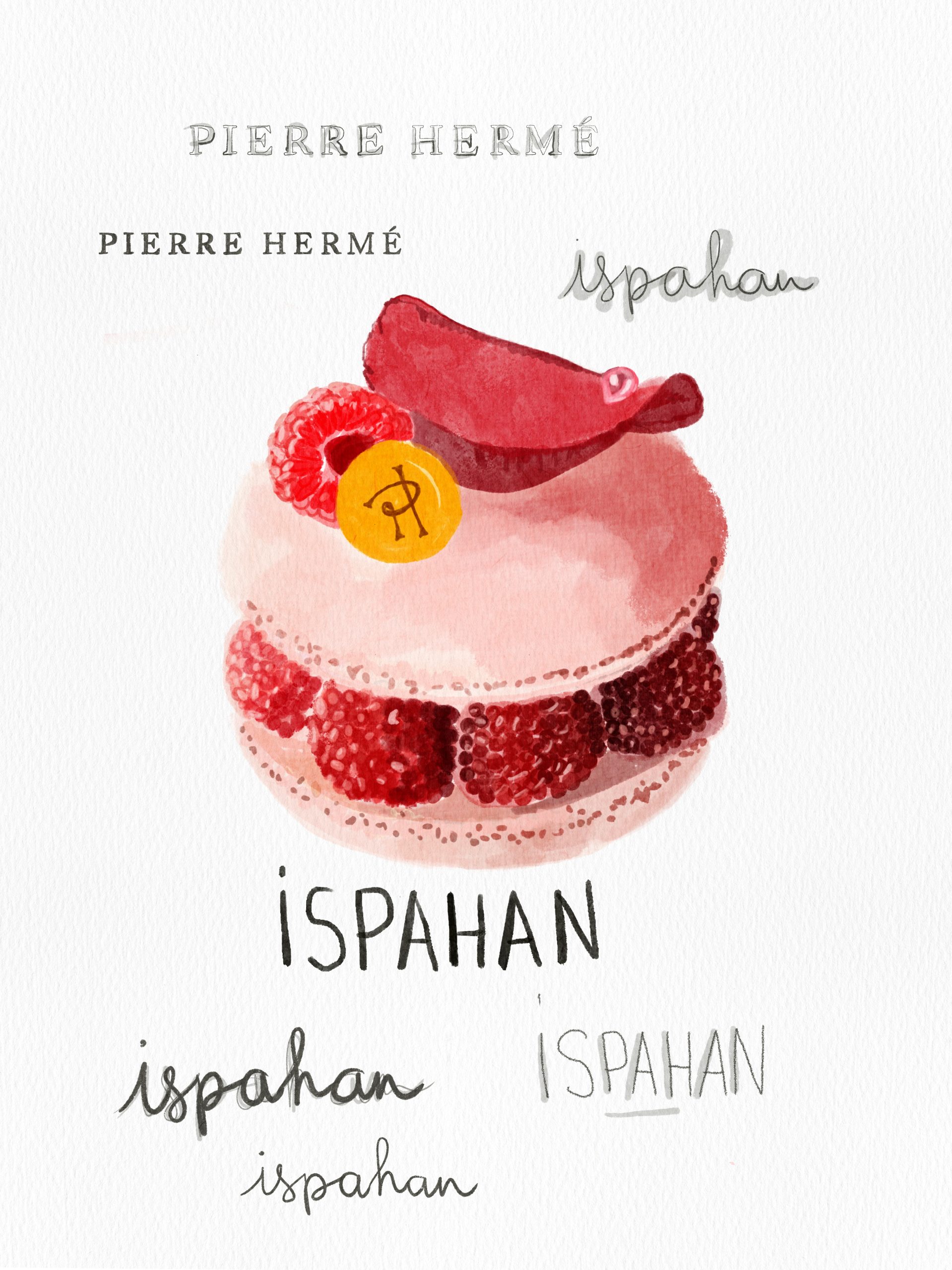
How does one prepare to work in the macaron team? That was exactly what I asked myself on the RER ride home after my first day with the afternoon team – the macaron makers.
I was exhausted, but also in awe. How could the team be so fast, precise, and professional, while still managing to be funny and kind?
I arrived at the Vaugirard shop well in advance, around 1:30pm, wanting to make a good first impression. The routine was now familiar: uniform on, aprons tied, hands washed, greetings exchanged. And then, I stepped into the macaron universe.
The rhythm of macaron-making
First, the ganaches. I started with jasmine, a delicate and fragrant batch, but by the time I had finished, the others had already made two, sometimes three.
Then, sorting the coques – the delicate macaron shells. Any broken ones were set aside, baking papers flipped onto racks, and the coques lined up: 12 across, 8 down. It might sound simple, but after a few hours, I felt like a macaron-sorting machine. My tired brain blurred the sizes together, and I realised how quickly repetitive tasks can play tricks on perception.
Next came filling and closing. One or two chefs piped the luscious ganache onto the waiting coques, and I followed, closing them as quickly as possible. The ganache sets fast, and if not closed in time, it doesn’t form the perfect little belly. This was my favourite part – until we got to the Ispahan macarons.
Not only did these need to be closed, but before that, each one had to be topped with a tiny square of homemade raspberry gellant. The sticky fruit jelly, made with agar agar instead of gelatine, added an extra step that required precision and patience. The result, though, was worth it. Biting into a perfectly round, glossy macaron, only to discover a hidden raspberry surprise, was nothing short of magic.
Pierre Hermé’s signature touch
This hidden centre is what sets Pierre Hermé’s macarons apart. Each one holds a little unexpected treasure:
– Olive oil and vanilla – two tiny pieces of green olive.
– Ispahan – a raspberry gellant square.
– Mosaic – two griotte halves (this one is my favourite).
– White truffle and hazelnut – three crushed hazelnuts.
It’s a brilliant idea, elevating each macaron beyond just a shell and a filling, making every bite a layered experience. And then there’s the ganache itself – generous, rich, the true focus of the macaron.
Closing time (or so I thought)
By the time we finished the last of the 6000 to 8000 macarons, it was already 11pm, and I assumed it was time to go home. I was wrong. Totally wrong.
Cleaning time.
Surprisingly, I didn’t mind. Cleaning the fridge felt almost refreshing after hours of standing in the heat. I hadn’t realised just how warm the room had become until I stepped inside. Who said macaron-making isn’t a sport?
The days after
Despite the tiredness, the heat, the repetitive motions, something shifted after that first day.
I got faster, more precise. I learned the rhythm of the team, the flow of the work. I made ganache after ganache, filled and closed hundreds of macarons, and worked alongside some of the kindest people I’ve ever met.
By the time my week with the macaron team ended, I almost didn’t want to leave (almost). The whole experience felt like a blur – a week that somehow lasted a minute.
The reward
Of course, I had to celebrate all the hard work. And what better way than with a selection of macarons from the current collection?
The tasting

01. Arabesque
Macaron sprinkled with pistachio, filled with apricot ganache and pistachio praline. The ganache, thickened with dried apricots, contains no cream. The pistachio praline? Absolutely out of this world.
02. Café fort [strong coffee]
A clean, well-balanced coffee ganache, wrapped in beautiful shades of brown.
03. Thé au jasmin [jasmine tea]
A floral, fragrant ganache with a distinct jasmine taste.
04. Caramel au beurre salé [salted caramel]
A rich caramel buttercream filling. Decadent. Impossible to resist.
05. Chocolat amer [bitter chocolate]
Dark chocolate macaron with a 70% dark chocolate ganache. The first macaron we make each day, as the high cocoa butter content means the ganache sets quickly. Rich, deep, slightly bitter – a classic.
06. Mogador
Milk chocolate and passion fruit ganache. At first, I wasn’t sure. Now, it’s one of my favourites. The sharp tang of passion fruit against the smoothness of milk chocolate is irresistible.
07. Ispahan
Rose and lychee ganache with raspberry gellant. I’m not the biggest fan of rose and lychee together, but the sharpness of the raspberry gellant makes this macaron sing.
08. Mosaic
Pistachio and cinnamon ganache with two griotte halves. Looks beautiful, tastes even better. The cinnamon warms the pistachio, while the griottes add a sharp contrast.
09. Olive oil et vanille
An olive oil and vanilla ganache, with two tiny green olives hidden inside. If you think olive oil in dessert is strange, this will change your mind. The slight bitterness of the oil against the sweetness of the vanilla is unexpectedly perfect.
10. Rose
Macaron with rose crème au beurre.
Tasting notes: Yummy in pink. This macaron is really fragrant and delicate.
Next week: back to the morning team.
(First written in July 2007, edited February 2025.)

